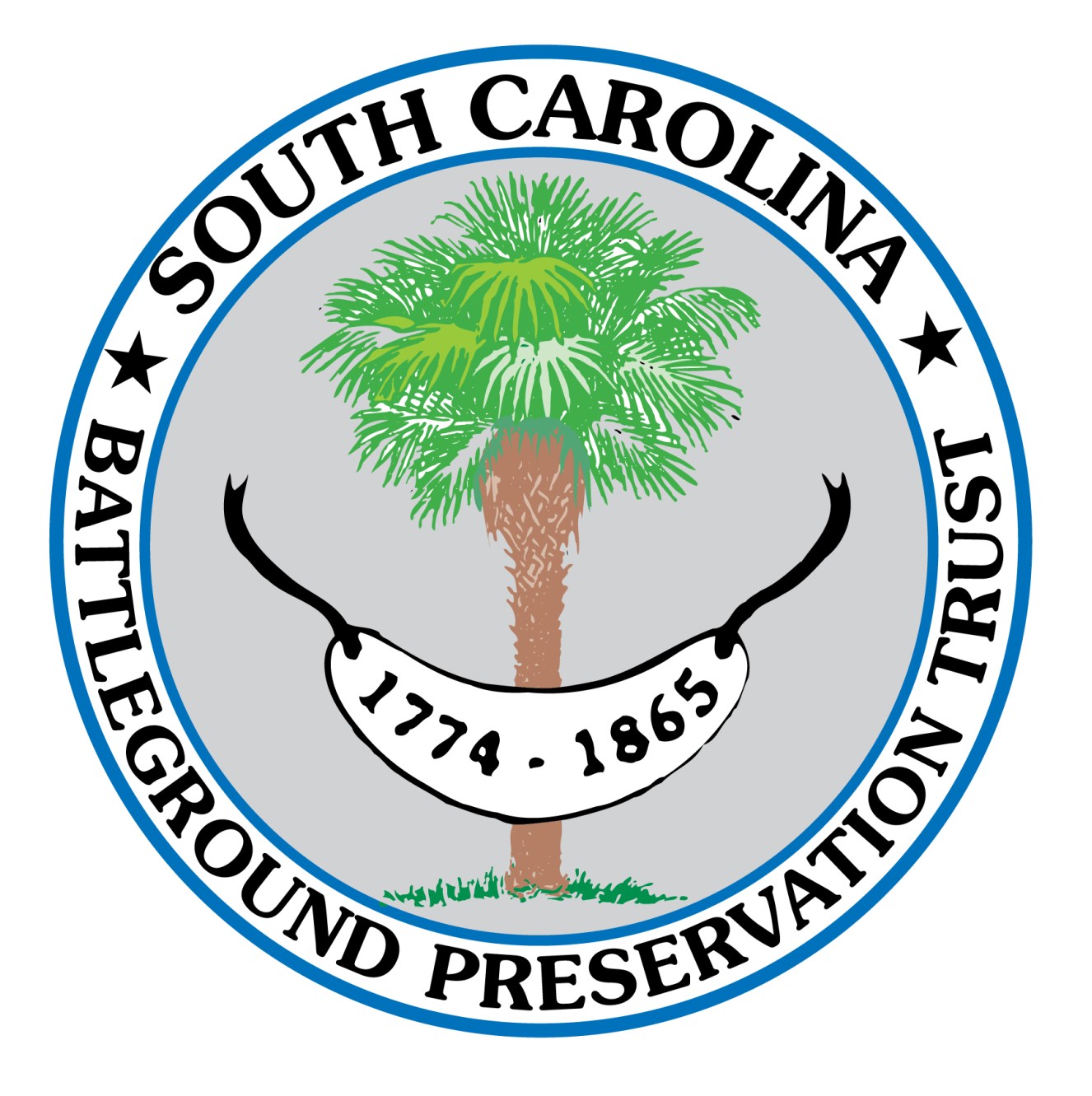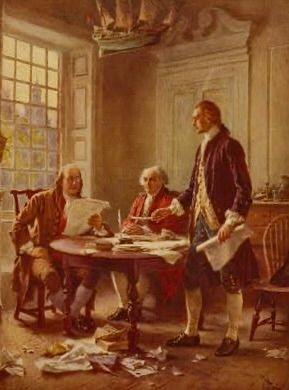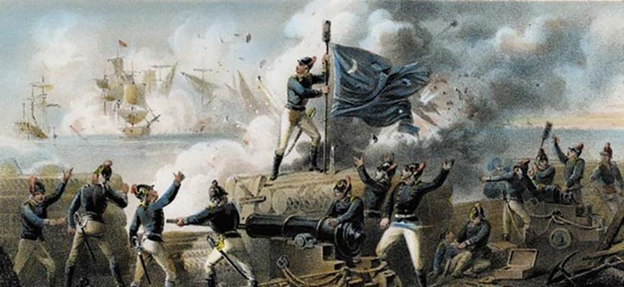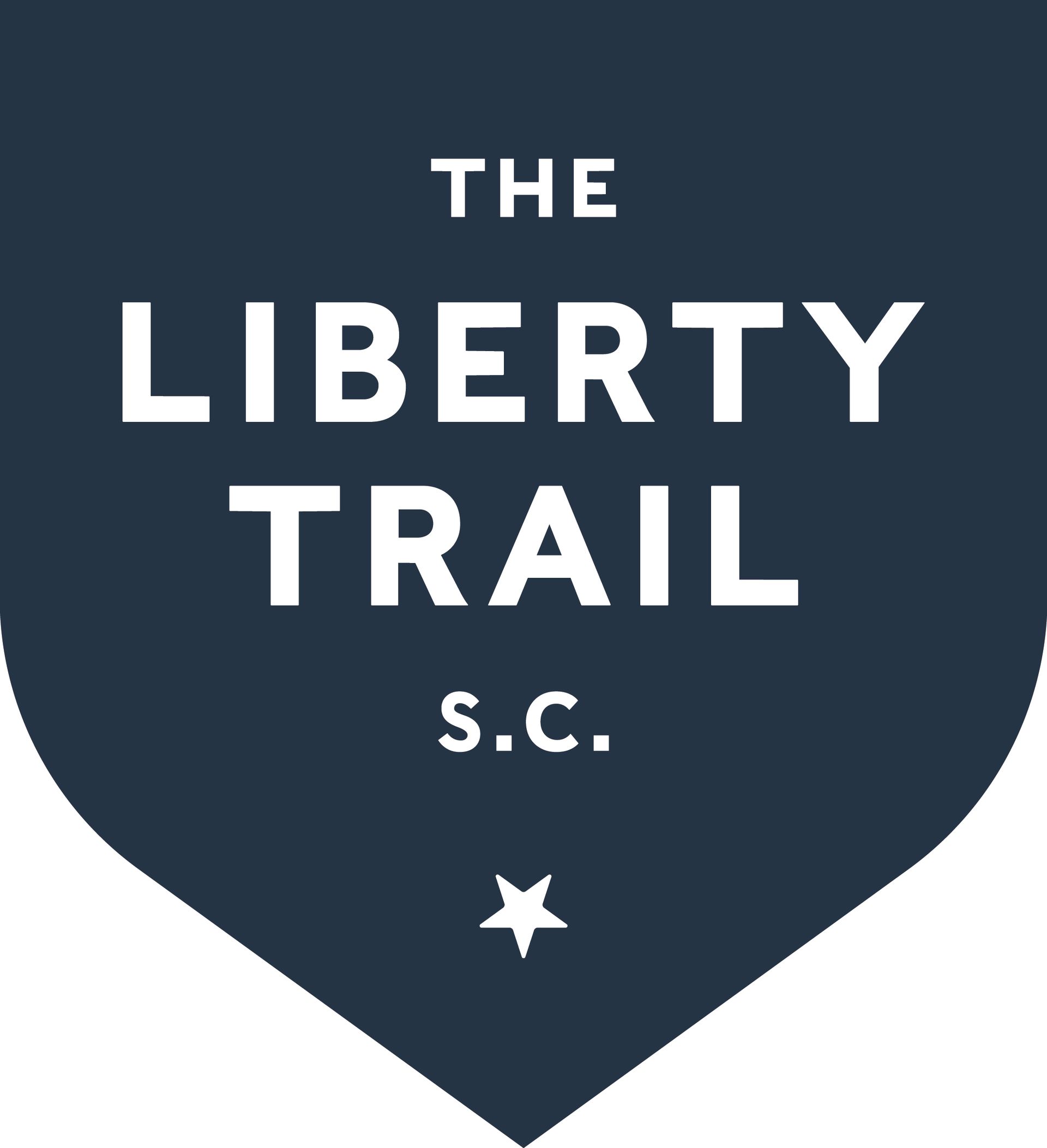Commemoration of the taking of Fort Johnson and the raising of the Moultrie Flag
Remarks by CEO Rick Wise, September 13, 2025
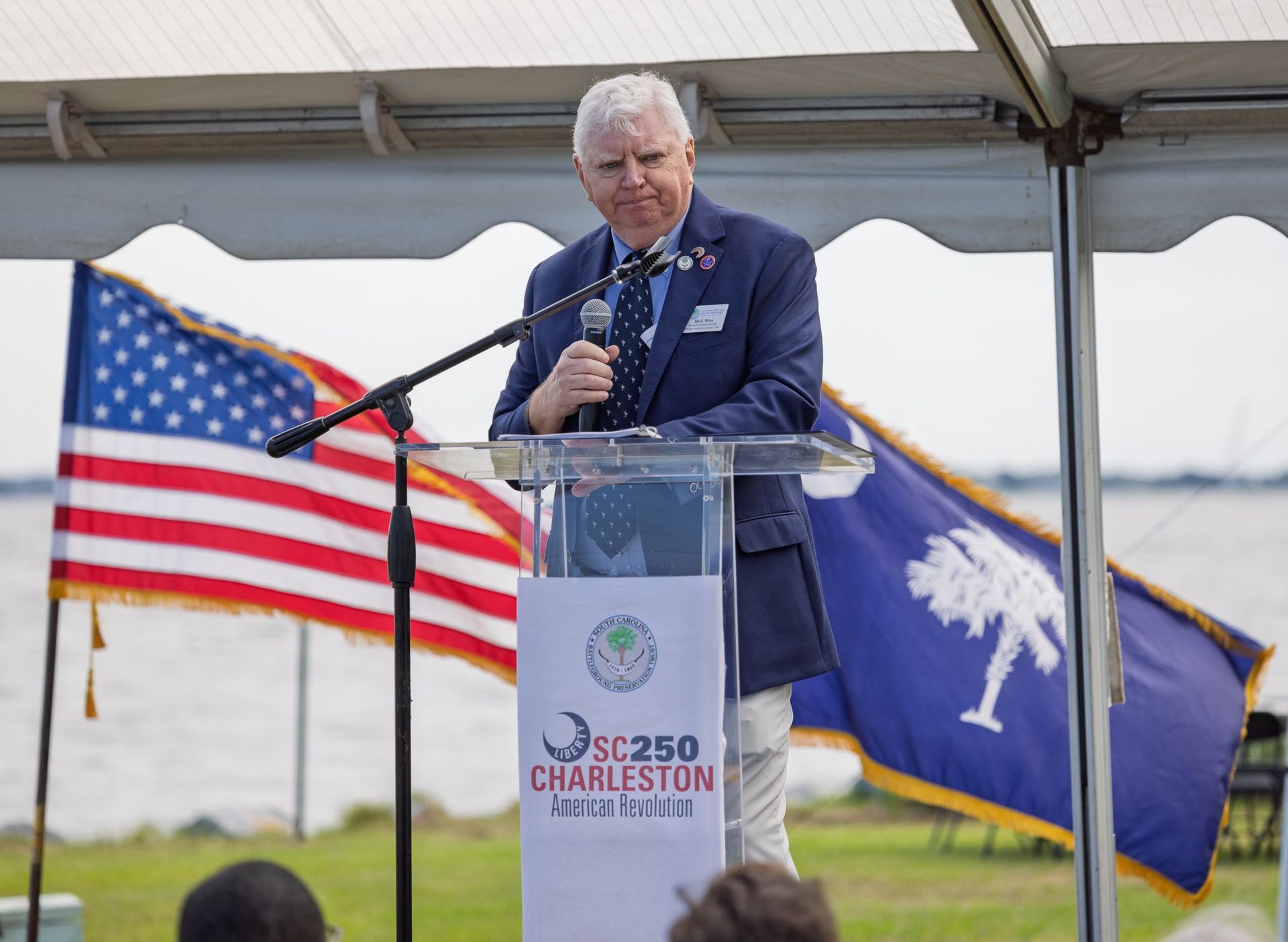
Distinguished guests, ladies and gentlemen, thank you for coming to observe the 250th Anniversary of the capture of Fort Johnson and the first raising of the Moultrie flag. As one of the first directly belligerent acts of war in South Carolina at the beginning of the American Revolution, it introduced the flag that is still the symbol for our great state 250 years later.
We will get to the impressive history of this site, but first, it is my honor to acknowledge the preservation of Fort Johnson as the vision of the late Doug Bostick, former CEO of the South Carolina Battleground Preservation Trust. A very tangible part of Doug’s legacy in battleground preservation is the very spot where we are right now. As a native of James Island, Fort Johnson held a very special place in his heart, and it was his efforts that led to its acquisition and preservation. And, if you are at all impressed with this breathtaking view, please give a round of applause in memory of Doug! By his foresight and action, this view will now be saved in perpetuity for future generations. Thank you, Doug! I know your spirit is here with us today.
I want to speak to you today about a place that stands as a silent witness to centuries of American history—Fort Johnson, South Carolina. Nestled quietly here on the shores of James Island, with a commanding view overlooking Charleston Harbor, Fort Johnson’s legacy is woven into the fabric of our nation’s story, from colonial times through the wars that created and shaped the United States. Today, I invite you to journey with me through the centuries, to explore the historical significance, pivotal moments, and enduring spirit of Fort Johnson.
The Colonial Beginnings
Archaeology shows that Native Americans were on James Island some 10,000 years ago. Europeans arrived to colonize this area in the 1600s. Fort Johnson traces its origins back to the early 18th century, a period of great change and uncertainty in the American colonies. There was no Fort Johnson in 1706 when Charles Town was attacked by a combined French and Spanish force. The enemy came ashore at several places, including right here, at Windmill Point on James Island. The colonists rallied and severely defeated the invaders, but the need for a better defense of the harbor was apparent. In 1708, South Carolina’s colonial government recognized the strategic importance of defending Charleston, the economic and political heart of the province. James Island, lying just across the water from the city, offered a commanding vantage over the harbor’s entrance. It was here that they established a wood and sand fortification named in honor of Sir Nathaniel Johnson, the then-Royal Governor of South Carolina.
The intent of these early defenses was clear: protect the colony from threats both foreign and domestic. European powers vied for control of the region, and pirates prowled the waters, seeking to disrupt trade and seize riches. The original simple earthworks and timber fort served as the colony’s sentinel, safeguarding Charleston from incursion. The fort went through the years suffering periods of neglect and the effects of being on the coast. In 1752, it was demolished by a catastrophic hurricane. That destruction was considered when the fort was rebuilt beginning in 1759 during the French and Indian War. Its construction was with tabby, a seashell and lime mixture that has the strength of concrete. It lasted so well, in fact, that some tabby remnants can still be found here today.
Fort Johnson in the Revolutionary Era
By 1775, as colonial tensions simmered and the call for independence grew louder, Fort Johnson found itself at the heart of America’s revolutionary spirit. Dr. Erick Nason will tell you in more detail about the momentous events that took place here in 1775, when the flag was raised at Fort Johnson to become a symbol of resistance and solidarity among patriots.
During the Revolutionary War, Charleston and its defenses became prime targets for British forces. Fort Johnson, though not the largest of the city’s fortifications, played a vital supporting role in the defense of the harbor. Its guns guarded the harbor waters, and its troops watched for enemy ships. The fort had as many as 60 guns in June 1776 and was commanded by Colonel Christopher Gadsden.
But when the British approached Charleston by land in 1780, Fort Johnson was “destroyed by Rebels,” according to one Scottish Grenadier, preventing its use by the enemy. When Charleston fell in 1780, the fort was occupied, including being manned by Hessian grenadiers, until the Redcoats evacuated the city in December 1782, ending the war in South Carolina. But the fort still held its defensive role for the state. In 1784, Francis Marion was the Commandant of Fort Johnson, the same fort he had helped take in 1775. He remained in that position until 1788. The fort deteriorated after that, and in 1791, a visitor to the fort described it as “quite fallen.” That visitor was President George Washington.
The Fort in the 19th Century
After the Revolution, Fort Johnson’s role shifted as new challenges arose. The fort was abandoned in the early 1800s, and then intermittently maintained and upgraded, with repairs made to its earthworks, barracks, and gun emplacements, with the still extant brick magazine being built 1807-1808. The War of 1812 revived the need for coastal defense, and once again, Fort Johnson stood ready to protect Charleston from foreign threat.
Throughout the 1800s, Charleston grew in prominence, and Fort Johnson continued to adapt. It was during this era that the fort underwent several reconstructions, transitioning from its humble origins to more robust brick and stone structures. Its guns evolved, too, with heavier cannons and improved artillery reflecting advances in military technology.
Fort Johnson and the Civil War
Perhaps the most dramatic chapter in Fort Johnson’s history unfolded during the War Between the States. In the early hours of April 12, 1861, a Confederate mortar positioned at Fort Johnson fired the first shot of the war that exploded over Fort Sumter, marking the beginning of a conflict that would forever change the nation. Throughout the war, Fort Johnson was an essential part of Charleston’s defensive network. The Confederates fortified the site, building batteries and earthworks to repel Union assaults. The fort’s guns, aimed seaward, were a constant deterrent to naval incursions. Its soldiers endured bombardments and blockades, holding fast against overwhelming odds.
Even as the war dragged on and Charleston eventually fell to Union forces in 1865, Fort Johnson remained a symbol of resilience. Its sand covered battered walls and silent guns bore witness to the sacrifices made by those who defended their homeland—both Union and Confederate alike.
The Twentieth Century and Beyond
With the end of the War Between the States, Fort Johnson gradually faded from its role as a military installation. Over time, the site transitioned to peacetime uses, serving as a quarantine station from 1872-1948, and later the College of Charleston and Medical University of South Carolina used the sited for a marine research facility and medical study, to include the MUSC President occupying the former quarantine officer’s house here on the point in 1954. The South Carolina Department of Natural Resources now occupies the grounds, using them for environmental research and preservation.
Today, Fort Johnson is recognized not for its military might, but for its historical significance and educational value. The magazine was listed on the National Register of Historic Places in 1972. The remnants of its ramparts and batteries stand as reminders of the past—places where visitors can walk in the footsteps of soldiers, patriots, and pioneers.
Legacy and Preservation
The legacy of Fort Johnson endures in many ways. It represents the spirit of South Carolina: a willingness to defend, adapt, and endure. The fort is a living classroom, teaching new generations about the complexities of American history, the cost of conflict, and the importance of peace. Archaeological studies have uncovered artifacts from its earliest days to its final battles, offering glimpses into the lives of those who served here. Local historians, educators, and volunteers work tirelessly to maintain the site and share its story with the public. Preservation efforts continue to include the acquisition of 1.58 acres here on the point from MUSC in October 2023 to ensure that Fort Johnson’s story is not forgotten. Please note that this is phase I of plans for this site, which will be much more user-friendly with historical interpretation and provide a more enjoyable visitor experience. Once the final phases are done and the site is protected by a conservation easement, it will be gifted to the state for oversight and care.
Fort Johnson is also part of The Liberty Trail, and on the Liberty Trail App, which will bring visitors here and to other sites around the state to learn about the role South Carolina played in winning the independence of our great Nation.
These preservation actions by the SC Battleground Preservation Trust, and its partners like the American Battlefield Trust, SC 250th Commission, the SC 250th Charleston Commission, DNR, and other agencies, are helping us preserve battlegrounds and military sites of historical significance around the state. Speaking for the Battleground trust, it is your support financially through memberships and donations that make this possible. As you look around at this site today, there is still much to be done to bring it to meet the vision of what it can and will be. To do that, and as you take in this view today, thank you for your past support, and we ask for your continued support in the future to ensure that this and other sites across the state are preserved to tell the story for future generations.
Conclusion
In conclusion, as we stand on the grounds of Fort Johnson and reflect on its story, we are reminded that history is not merely a collection of dates and events, but a tapestry woven with the dreams, struggles, and triumphs of countless individuals, for history is about people and what they did that brings us to today. From its colonial foundation to its role in the wars that shaped our nation, Fort Johnson embodies the resilience and determination of South Carolina and the United States.
Let us continue to honor its legacy, preserve its memory, and share its lessons with generations yet to come. Thank you for joining me on this journey through the history of Fort Johnson—may its story inspire us all to cherish our heritage and strive for a better future.
Thank you, and Huzzah!
